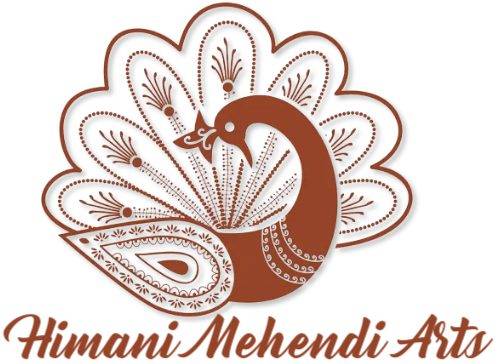Introduction
Ever found yourself mesmerized by the beautiful swirls of henna on a bride’s hand? If you’re someone who loves art and has a steady hand, becoming a Mehndi artist might just be your calling. It’s not just about drawing on hands—it’s about telling a story through delicate designs and making someone’s special moments even more magical.
Understanding the Basics of Mehndi
History and Cultural Significance
Mehndi, also known as henna, has roots tracing back to ancient India, Egypt, and the Middle East. Traditionally, it symbolizes luck, love, and positivity—especially in weddings and festivals like Karva Chauth, Eid, and Diwali.
Types of Mehndi Designs
-
- Indian Mehndi – Filled with intricate patterns, peacocks, bride-groom motifs, and detailed storytelling.
-
- Arabic Mehndi – Known for bold, floral designs with thick strokes and empty spaces.
-
- Moroccan Mehndi – Features geometric patterns and symmetry.
-
- Indo-Arabic Mehndi – A blend of Arabic boldness and Indian intricacy.
Skills Required to Become a Mehndi Artist
-
- Creativity and Artistic Skills: Your imagination is your superpower.
-
- Patience and Precision: One wrong move can ruin a design.
-
- Color Knowledge: Knowing how natural henna stains and how to make it darker.
-
- Client Communication: Understand their vision and comfort.
Step-by-Step Guide to Becoming a Mehndi Artist
Step 1: Learn the Basics of Mehndi Design
Start with YouTube, Instagram reels, and books like “Mehndi Designs for Beginners”. Use practice sheets and transparent glass to trace patterns.
Step 2: Take a Professional Mehndi Course
You can find tons of options—both online and in-person. Popular platforms include Udemy, Skillshare, and local beauty academies. These courses usually cover design theory, practicals, and aftercare.
Step 3: Practice Daily
There’s no shortcut to skill. Use practice hands or your own arm. Try different styles like dulhan mehndi, mandala, and minimal bridal looks.
Building a Portfolio
A visual portfolio is your best marketing tool. Use natural lighting and clean backgrounds. Share transformation videos, before/after shots, and even client reactions.
Instagram, Pinterest, and Facebook are your stage—show off your designs with trending reels and music!
Getting Your First Clients
Start with family and friends
It’s the easiest way to get your first canvas and testimonials.
Offer Free or Discounted Trials
In exchange for permission to post their photos online, give a free session.
Promote Through Word of Mouth
Ask your happy clients to tag you on Instagram or refer their friends.
Setting Up Your Mehndi Business
-
- Register Your Brand with a catchy name like “Henna by Hina” or “Mehndi Magic Studio”.
-
- Create Business Cards and a logo using Canva.
-
- Build an online presence with a basic website or booking link.
Marketing Your Mehndi Art
-
- Social Media: Post reels with trending music, before-after videos, tutorials.
-
- Bridal Exhibitions: Attend fairs and offer demo designs.
-
- Collaborations: Partner with photographers and makeup artists to offer bridal packages.
Pricing Your Services
Think of your time, design complexity, and materials used. Start with hourly rates or per-hand charges. Create packages for bridal, festive, and party mehndi.
Don’t compare yourself with beginners—value your effort!
Tools and Materials Every Mehendi Artist Needs
-
- Good Henna Cones – Stick to natural brands like Prem Dulhan or homemade cones.
-
- Practice Sheets and Fake Hands
-
- Aftercare Kits – Include lemon-sugar mix, essential oils, and sealing tape.
Mehndi Trends You Should Know
-
- Bridal Trends: Personalized stories, dulhan-dulha faces, and hashtag designs.
-
- Festival Trends: Fast Arabic designs and finger mehndi.
-
- Minimalist Styles: Perfect for modern brides and kids.
Legal and Safety Considerations
-
- Always do a patch test to avoid allergic reactions.
-
- Get basic client consent, especially for minors.
-
- Store henna in a cool place and avoid chemicals like black henna.
How to Keep Improving
-
- Follow top artists on Instagram and YouTube.
-
- Join mehndi forums and Facebook groups.
-
- Attend regular masterclasses to stay trendy.
Challenges in a Mehndi Career
-
- Client Pressure: Some want full bridal designs in 2 hours!
-
- Seasonal Demand: Super busy during wedding seasons and quiet after.
-
- Physical Strain: Back pain is real—don’t forget to stretch!
Benefits of Becoming a Mehndi Artist
-
- You are your own boss.
-
- Weddings and festivals bring in great income.
-
- It’s a flexible, creative, and soulful career—ideal for stay-at-home moms, students, or anyone artistic.
Conclusion
Becoming a Mehndi artist isn’t just about learning how to hold a cone—it’s about bringing joy, tradition, and creativity into people’s lives. Whether you dream of adorning brides or building your own mehndi empire on Instagram, the path is colorful and fulfilling. Start small, stay consistent, and keep drawing those dreams with henna!
FAQs
1. Do I need a degree to become a mehndi artist?
Nope! Mehndi art is a skill-based career. Practice and creativity matter more than a formal degree.
2. How long does it take to learn mehndi professionally?
With daily practice, you can master basic to intermediate designs in 3–6 months.
3. Can I work from home as a mehndi artist?
Absolutely! Many artists create home studios or do home visits for clients.
4. Is mehndi art a profitable business?
Yes, especially during wedding and festive seasons. Bridal designs can go from ₹2,000 to ₹25,000+ depending on expertise.
5. What’s the best way to darken mehndi stain?
Use natural henna, keep it on for 6–8 hours, and apply lemon-sugar mix regularly. Avoid water for 24 hours post-application.

